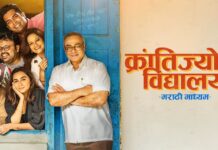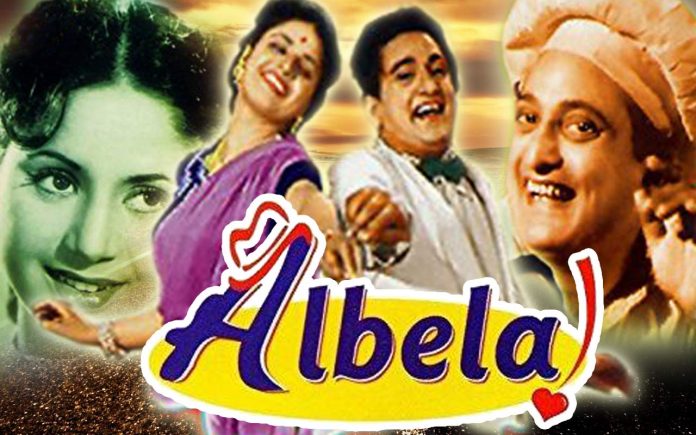By Surendra Bhatia
Preserving The Past…
The one imperative need to safeguard for the future is the past, especially in the arts. And that, astonishingly, is where film industries showcase their most cavalier attitude. A production house or studio takes great pains to ensure that its lead stars are not given any reason to get upset. An army of film unit foot soldiers are let loose on the set to protect the stars from any ill-experience. It costs a lot of money but the losses are greater if a shooting day is lost. Ask the same unit if it has preserved the costumes of its previous film, or the original screenplay submitted by the writer or the director’s script copy with notes in the margin, or the clapboard used during the shooting or anything really, in its original form, and the most likely answer would be that most of it is lost and a small bit of what may be considered memorabilia is locked up in some anonymous trunk and stored in some godown to which the key is not easy to find. The pressures of the present production venture drive everything about the previous film under the ground, deeper than six feet.
Yet, it is well-known that filmmakers who have managed to salvage their past films and their memorabilia have managed to keep their noses above the water even without a single new release in the previous two decades. Past pays handsomely, as was illustrated in the case of late comedian Bhagwan, who was able to pull himself out of penury because a print of his popular but ancient film, Albela, was discovered and could be exploited in cinemas. Ancient and currently defunct production banners like Navketan Films and R.K. Films still turn over a decent fortune through sale and re-sale of their film catalogue’s rights. And there are many others too, though, unfortunately, not as many as the ones who have nothing to show of their cinematic history.
Past is often seen as a burden because preservation doesn’t come cheap. And if any profits are to be made, they are way out in the future. The analogy may not be sound but it is really like looking after a child till he grows to maturity, with a prayer that he would find ways to earn back all that has been spent on him plus lots more. (Okay, preservation of past films and memorabilia would cost much less than bringing up a child, though the risk factors in both are much the same: the RoI may still not be worth it.)
To many, it might seem, the problem is particularly Indian; that it is our filmmakers who are negligent about preserving their or their forefathers’ cinematic past because the cost is too much of a burden. Far from it. Apparently, this malaise, of not spending enough on preserving the past as the RoI is uncertain, is widespread, throughout the globe. Most recently, it came to light that in the 2008 fire in Universal Studios, in which the theme park’s King Kong attraction had got destroyed, there was another casualty that was not revealed then. A recent investigation by the New York Times has highlighted that the fire also incinerated a building known as 6197, which served as a warehouse for music archives and also film clips and old TV shows. It has taken 11 years for the news to reach the public domain but, apparently, the fire destroyed some of the music industry’s greatest treasures. It is said that the original master recordings of greats like Louis Armstrong, Ella Fritzgerald, Aretha Franklin, Ray Charles, Gun N’ Roses, Sting, Janet Jackson, Snoopy Dogg, BB King, Buddy Guy and many others were totally obliterated. These are, for those who may not know, some of America’s greatest music legends. Among the sound masters that have been lost forever to mankind are ones where all instruments and vocals were on separate tracks; and these can’t ever be retrieved. The thing about having multi-track masters is that the recording can be remixed any which way any time in the future; it also provides the option of adding/subtracting instruments to give the song a different feel. Without this multi-track master, the song will exist as it was originally mixed, with no room for further innovation.
Before coming to the historical value of these masters, a question needs to be asked: why didn’t Universal reveal this loss?
That, perhaps, is the true tragedy of this episode. The fact is that most of the songs, of which the music masters were lost, exist in some form or the other in which they had been originally released. As far as the studio is concerned, the music is in the public domain and is being monetised in various forms. And, apparently, now that the archives are lost, the cost of preserving them in a separate building makes it worthwhile, so to say, to avoid the loss of possible future earnings. Perhaps, in the short term, the potential of the unexploited music legacy was not worth the cost of preserving the entire lot in a separate building. However arguable this may be, this is the general consensus.
Also lost in the fire were session masters. These are recordings of whatever the artiste may care to sing; it may just be a rehearsal and not in its final shape. Some of these may be just works in progress. But these are invaluable. Imagine managing to lay hands on Lata Mangeshkar’s half a dozen rehearsals or NG takes of her rendition of the title song of Satyam Shivam Sundaram. This is illustrated better in another telling instance: Jim Reeves, one of America’s greats, had a non-professional recording studio at home where he used to strum a guitar and sing and record whatever he sang. Most of these were like private rehearsals, or experiments with his voice and sounds, which he practised and recorded regularly. He died most unfortunately in an air crash at the height of his fame in 1966, when he was only 41. At the time of his death, he was a bestselling artiste. However, his music career did not stop with his death. His widow, and some music labels, managed to release fresh Jim Reeves’ numbers right up to 1996, that is, 30 years after his death! New songs just kept on coming even though the singer was dead and gone. It is estimated that from his death in 1966 to 2003, as many as 80 of new Jim Reeves songs had been released.
This was possible because of Jim Reeves’ session masters and his random recordings at his home studio. Most of those songs, sung by Reeves with just a guitar which he played himself, were overlaid with orchestrated music and released as fresh numbers in the years after his death. And, many of them became bestsellers. Post his death, new technology made it possible to turn some of his home recordings into duets too. All this was possible because session masters and his home recordings provided a huge treasure trove of music that could be exploited. It is believed that Reeves’ music made more money posthumously than when he was alive.
In Indian terms, if Kishore Kumar had left behind similar session masters, we would still have fresh numbers in his voice… what a treat that would be!
Universal lost a treasure but it may not be bothered much, because history is history and legacy is legacy but the imperative need is to keep the red away from the bottom line.
Indian film industries, undoubtedly, have been most callous with the past. Of course, much of it has to do with stinginess or lack of finance or unwillingness to pay for preservation. But there’s another factor which, too, has played a major role: lack of a sense of history.
There’s this famous incident about a public function where Raj Kapoor was being honoured for his contribution to cinema or something, and among the anonymous people sitting in the audience was Dadasaheb Phalke, the father of Indian cinema. To Raj Kapoor’s credit, he immediately went up to Phalke and took him to the dais and introduced him to the public and hailed him for his contributions. For the public, the man, Phalke, meant nothing in face of the rising star that Raj Kapoor was then.
Raj Kapoor, perhaps, had a sense of history. He had managed to preserve a large number of memorabilia from the many films he had produced, storing it in his R.K. Studios. Unfortunately, an accidental fire in the studio destroyed much of that treasure, much like the fire at Universal put paid to so much of music history and legacy.
Bollywood has just started waking up to the idea of preserving the past, though the reasons are, typically, financial. The Hindi film industry has realised from Hollywood’s experience that people have a fascination for film memorabilia and there’s much money to be made from tourists who pay handsomely to get within touching distance of the stuff stars have handled. The mirror with which Amitabh Bachchan picturised his famous drunken scene in Amar Akbar Anthony is possibly lost forever but imagine, if it was put up on a wall of a restaurant…. hundreds would line up to enact that scene and shoot it on their phone cameras!
It’s only now that serious talks are on about putting up a museum for Bollywood memorabilia in Bombay’s Film City, largely to attract tourists. Bollywood has to realise that revenues from tourism could contribute substantially to its coffers. It’s just a matter of providing people an opportunity to get close to its past. What happened at Universal was tragic, but it’s no different than what has been happening in Indian film industries on a daily basis. It’s time the film industry, if not the government, stepped up and did something about preserving the country’s cinematic past.
Shah Rukh Khan Is Always News
Like all Bollywood A-listers, Shah Rukh Khan too usually stays under the radar till it’s time to promote his upcoming film. And then, he goes the whole hog, appearing on popular TV shows, giving extravagant interviews, in print and for news channels, putting in the time to travel around the country, looking up fans in cinemas and malls… the usual stuff stars do while promoting their films.
This is, perhaps, the only time SRK is in news for not doing any films. It is also the only time in his long career that he doesn’t have any films on hand. If other, lesser actors were in this position, it would unlikely be out of choice. It would be because films have stopped coming in. Shah Rukh is not in any danger of falling into that category. He is, in fact, turning down films, ensuring that his head and heart are in the right place before he starts acting again. He’s taken a sabbatical from acting in films though his other interests – endorsements and productions – continue unaffected, of course.
The obvious reason for the sabbatical would be that his last few films have disappointed his fans and the box-office. The more natural reaction of a star in his position would be to simply sign more films, with reputed directors, and pray that one of those directors would get it right. However, with Shah Rukh, it is not as simple as that. It seems as if he wants to re-evaluate his understanding of scripts and Bollywood cinema, and figure out where he is going wrong. He realises, probably, that he had the final call on the last few scripts that didn’t convince audiences; he also had the final say on the choice of director, heroine, production and post-production and final editing. Had he wanted, he could have changed any of these at any stage. The fact is, he didn’t. He must have thought, the films would be super-hits. Unfortunately, the audiences didn’t agree with him.
The sabbatical is for Shah Rukh to do a re-think and align his sensitivities to that of audiences. There’s currently a visible gap between the two and somehow or the other, Shah Rukh has to bridge it. As soon as he achieves that, the superstar will get down to shooting again. He hasn’t ruled Bollywood for over two decades for nothing. Shah Rukh Khan will be back.
































